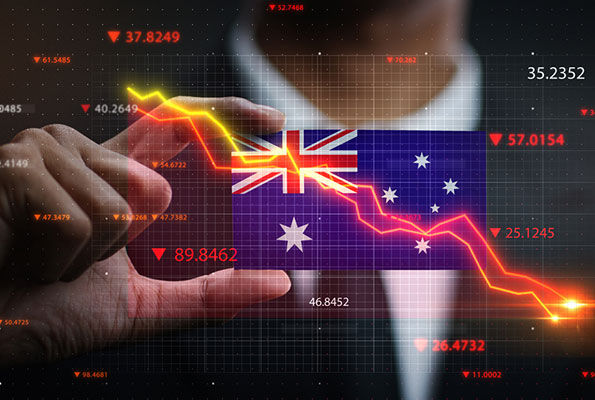The Reserve Bank of Australia anticipates GDP growth somewhat higher than the Commonwealth Bank of Australia’s (CBA) projections at 2.25%. As a result, the Reserve Bank of Australia has increased interest rates significantly since May 2022 to battle inflation.
Australia went through its first recession in three decades in 2020 due to the lockdowns and economic disruptions due to COVID and the GDP shrank by 1.8%. Since then, the growth has recovered thanks to government-backed monetary and fiscal stimulus, the loosening of constraints, and a rise in company investment and consumer expenditure.
However, the Reserve Bank of Australia has sharply increased interest rates over the last nine months from 0.1% to 3.35% as a result of the return of inflation, which is being brought on by a combination of global and domestic factors, including supply chain pressures, higher energy and food prices, and a tight labour market.
While the most recent wave of inflation is believed to have peaked at 7.8% in the third quarter of 2022, the ongoing effects of price increases are anticipated to fade at the 2023 end. As per the CBA’s projections, they won’t begin to return to the RBA’s target range of 2% -3% until 2024.
The RBA hinted in February that a further increase in the official cash rate might be necessary to reach that goal. The CBA now anticipates that the central bank will raise interest rates to 3.85% with increases of 0.25% each in March and April 2023 before stopping to assess the full impact on consumer and business spending.
The RBA will need to cut interest rates in the fourth quarter of 2023 to help prevent the possibility of a recession, also known as a “hard landing” for the economy, as consumer confidence is expected to continue to decline, house prices to weaken, and the first signs of a spending slowdown to emerge.
On the good side, though, exports and non-mining investments are still holding up well, and current and future growth will continue to be supported by low levels of unemployment, common underemployment, and high participation rates. In addition, a quicker return in net overseas migration should also lessen the strains of a tight labour market.
Australia Treasurer Jim Chalmers has now said that there are “very encouraging” signs of power prices falling, expressing confidence that the country will avoid a recession despite continuing interest rate rises.
The treasurer told ABC’s Insiders that he still believed Australia would avoid a recession, although he acknowledged there were some “tricky” conditions.
“Well, that’s our expectation based on the government’s forecasts and the Reserve Bank’s forecasts. Both of those institutions expect us to avoid that scenario. But, clearly, we’ve got a combination of challenges in the economy right now and we expect our economy to slow considerably this year, both the Reserve Bank and the Treasury expect that to be the case,” Jim Chalmers added.
The government announced a USD 1.5 billion energy price relief package in December 2022 in a bid to bring down power bills.
Jim Chalmers said the latest data showed the intervention was working, with electricity prices forecast to rise 23%, down from the 30% forecast in October 2022.



